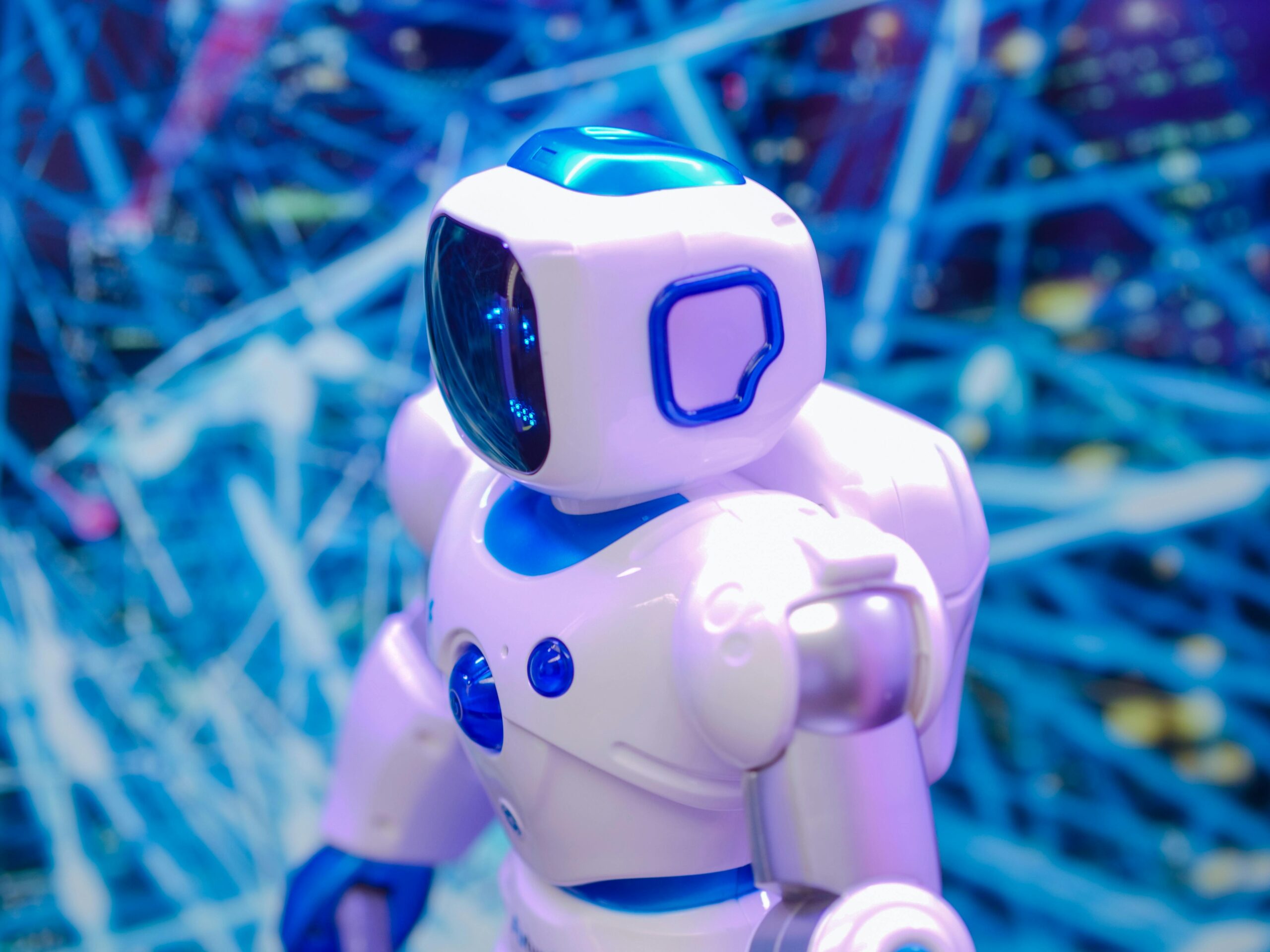Introduction: The AI Revolution Has Only Just Begun
We’ve reached an inflection point in human history. AI is no longer a distant dream or science fiction trope — it’s part of our everyday lives. From voice assistants that order our groceries to language models like ChatGPT writing blog posts (yes, this one too!), artificial intelligence is reshaping the world at an unprecedented pace.
But the question we’re all asking now is: What comes next?
As we move beyond 2025, AI is set to evolve in ways that will disrupt industries, redefine human interaction, and challenge our ethical frameworks. This article explores the next 10 years of AI, analyzing trends, breakthroughs, and societal shifts that will shape the future from 2025 to 2035.
Let’s dive into the AI-powered world that’s just around the corner.
Chapter 1: From Narrow AI to General Intelligence (AGI)
1.1 Narrow AI vs. AGI
Until now, most AI has been narrow — specialized in specific tasks like image recognition, chat support, or language translation. But in the next decade, we will witness serious strides toward Artificial General Intelligence (AGI) — AI with human-level reasoning and flexibility.
1.2 Key AGI Milestones to Watch
-
Multi-modal models that combine vision, language, sound, and reasoning.
-
Self-learning systems that can adapt across diverse domains.
-
Autonomous agents that can complete long-term, goal-based tasks without human input.
1.3 AGI Use Cases
-
Scientific research co-pilots
-
Autonomous software developers
-
AI-driven CEOs or business strategists
While full AGI may not arrive by 2035, we’ll inch closer to machines that can think and act more like humans than ever before.
Chapter 2: AI Goes Emotional — The Rise of Emotional Intelligence
2.1 Understanding Emotional AI
Artificial intelligence isn’t just getting smarter — it’s getting more emotionally aware. Emotional AI refers to systems that can detect, interpret, and respond to human emotions.
2.2 Applications of Emotional AI
-
Mental health: AI therapists that can recognize emotional distress in real-time.
-
Education: Tutors that adjust teaching methods based on a student’s mood.
-
Customer service: Call center bots that adapt tone and empathy in conversations.
-
Entertainment: Games and media that emotionally respond to the viewer.
2.3 Ethical Considerations
This emotional depth comes with risks: manipulation, surveillance, and biased interpretations. The next 10 years will see emotional AI paired with stricter ethical guidelines to ensure it serves — not controls — human emotions.
Chapter 3: The Future of Work — Reimagined by AI
3.1 Automation of Knowledge Work
We’ve already seen AI impact manual and repetitive jobs. The next wave? White-collar work. Expect to see automation in:
-
Legal research and case summarization
-
Financial analysis and reporting
-
Code generation and debugging
-
Marketing copywriting and SEO
3.2 Human-AI Collaboration Becomes the Norm
Rather than eliminating all jobs, AI will redefine roles:
-
Doctors supported by AI diagnostics
-
Teachers with AI-powered lesson plans
-
Writers using AI for ideation and editing
3.3 Rise of the “AI-First” Workforce
New roles will emerge:
-
AI ethicists
-
Prompt engineers
-
Machine learning explainers
-
Human-AI experience designers
The workplace of 2035 will be hybrid — not human or AI, but human+AI.
Chapter 4: The Explosion of Generative AI
4.1 Beyond Text — Multi-Modal Creation
By 2030, AI won’t just generate text or images. It will generate:
-
Films: Full-length, AI-produced movies with lifelike actors
-
Music: Compositions in your favorite style — instantly
-
3D worlds: Auto-generated virtual environments for gaming or training
-
Apps: No-code app creation using voice prompts
4.2 Personalized Generative Media
AI will tailor entertainment and information to individual tastes — imagine:
-
News stories rewritten for your tone and bias
-
Movies that change endings based on your mood
-
Music tracks composed for your unique brainwaves
This level of customization will revolutionize how we consume and create content.
Chapter 5: AI in Healthcare — Toward Predictive and Preventive Medicine
5.1 AI Doctors and Diagnostic Systems
AI will become central to healthcare systems:
-
Predicting diseases before symptoms emerge
-
Recommending personalized treatments
-
Assisting surgeons with robotic precision
AI will reduce diagnostic errors and improve outcomes, especially in rural and underserved areas.
5.2 AI-Powered Drug Discovery
AI will shorten drug development cycles from 10 years to months by simulating clinical trials and identifying molecular structures in silico.
5.3 The Ethics of AI Medicine
Concerns include data privacy, algorithmic bias, and decision accountability. Regulations will emerge to ensure medical AI is fair, explainable, and accountable.
Chapter 6: AI Governance and Global Regulation
6.1 Why AI Needs Regulation
As AI becomes more powerful, it poses societal risks:
-
Deepfakes and disinformation
-
Job displacement and inequality
-
Surveillance and data abuse
-
Autonomous weapons
6.2 The AI Regulatory Landscape
Expect to see:
-
Global AI safety treaties
-
Ethical AI frameworks for corporations
-
Licensing for high-risk AI systems
Much like nuclear tech, AI will need oversight at the global level.
6.3 Techno-Geopolitics
AI is becoming a tool of international power. The next decade will see AI play a pivotal role in:
-
Cybersecurity and defense
-
Economic competition
-
Diplomatic negotiations
A new arms race may unfold — but this time, it’s not bombs; it’s algorithms.
Chapter 7: AI for Climate, Sustainability, and the Planet
7.1 Climate Modeling and Prediction
AI will forecast weather events, track deforestation, and simulate environmental changes with high accuracy — enabling smarter climate decisions.
7.2 AI-Powered Conservation
AI can monitor wildlife, prevent illegal logging, and optimize crop growth through:
-
Smart sensors
-
Satellite imagery
-
Real-time alert systems
7.3 Green AI
The energy cost of AI itself is a concern. The future will bring:
-
Energy-efficient models
-
Carbon-neutral data centers
-
Regulatory pressures to build sustainable AI
Chapter 8: AI in Personal Life — Companions, Tutors, Coaches
8.1 AI Companionship
Loneliness is a growing epidemic. By 2035, AI companions could offer emotional support, intellectual conversations, and even companionship to elderly or isolated individuals.
8.2 AI in Education
Education will shift from one-size-fits-all to AI-personalized learning paths, powered by student analytics, emotion detection, and adaptive teaching.
8.3 AI as Life Coach
Imagine an AI that tracks your habits, predicts your emotional state, and helps you achieve personal goals — from fitness to finance to relationships.
Chapter 9: Cultural Shifts in an AI-Integrated World
9.1 Redefining Creativity
As AI generates art, music, and literature, society will rethink:
-
What is creativity?
-
What is originality?
-
What does it mean to be an artist?
9.2 Human Identity in the Age of AI
AI will challenge traditional concepts of identity, value, and purpose. As machines become more capable, humanity may turn inward — seeking emotional, spiritual, and philosophical depth rather than productivity.
Chapter 10: Challenges and Risks We Must Prepare For
10.1 AI Alignment and Safety
If AGI becomes reality, ensuring its values align with ours will be critical. Misaligned AGI could lead to unintended consequences — or worse.
10.2 Disinformation and Synthetic Reality
Deepfakes, AI-generated fake news, and synthetic media will blur the lines between truth and fiction. Digital literacy and AI detection tools will become essential.
10.3 Socioeconomic Disparities
AI could widen the gap between the tech-empowered elite and the rest. UBI, reskilling programs, and ethical AI deployment will be essential to mitigate inequality.
Chapter 11: The Democratization of AI – Power to the People
11.1 Open-Source AI Gains Momentum
In recent years, the most powerful AI systems have been developed by a handful of tech giants — OpenAI, Google DeepMind, Meta, and others. However, the next decade could see a shift toward open-source AI platforms, where developers and communities around the world co-create and share powerful models for free.
Projects like Mistral, EleutherAI, and LLaMA are already proving that open-source AI can rival corporate tools. Over the next 10 years:
-
AI creation tools will become more user-friendly.
-
Developers without PhDs in machine learning will train powerful models.
-
Localized AI models for small businesses, startups, and nonprofits will emerge.
This could level the playing field and spark innovation from the grassroots up, especially in developing regions.
11.2 Decentralized AI Infrastructures
Alongside open-source models, decentralized AI platforms powered by blockchain and peer-to-peer networks may rise. These systems:
-
Allow users to control their own data.
-
Reduce reliance on centralized servers.
-
Enable “AI cooperatives” where ownership is shared among users.
Imagine an AI assistant that learns only from your data, operates on your terms, and serves your goals — not a corporation’s.
The next 10 years could mark a radical shift from centralized AI empires to AI built by the people, for the people.
Chapter 12: AI and the Next Internet — The Rise of Intelligent Interfaces
12.1 From Search to Assist
Right now, most of us interact with the internet by searching and clicking. But in the near future, we’ll talk, gesture, and think our way through intelligent interfaces.
By 2030:
-
AI copilots will replace traditional web browsers.
-
You’ll describe what you want, and AI will deliver it — instantly.
-
AI will anticipate needs before you ask — from travel planning to managing your home.
The interface won’t just be on screens. It will be ambient — embedded in your car, kitchen, office, and even your body through wearables or brain-computer interfaces.
12.2 The Merging of AI and AR/VR
As Apple, Meta, and others invest in spatial computing, we’ll see AI become the brain of the next internet era:
-
Virtual AI coworkers in your AR workspace
-
Real-time AI translation in your VR meetings
-
AI-generated holograms for personalized education or entertainment
This AI-powered “Spatial Web” will change how we interact with digital and physical reality — blending the two seamlessly.
Chapter 13: Final Thoughts — Building a Human-Centric AI Future
As we imagine the next 10 years, the most important trend may not be technological at all — it’s human alignment.
All the code, data, and algorithms in the world mean nothing if they don’t serve people’s wellbeing. The real challenge will be:
-
Designing AI that respects human values
-
Empowering individuals, not replacing them
-
Ensuring access for all — not just the rich or powerful
The AI revolution is not just about smarter machines — it’s about wiser societies.
We stand on the edge of a decade that will redefine intelligence, labor, ethics, and even consciousness. Let’s make it a future that benefits everyone — not just a few.
Conclusion: The AI Decade Ahead — Full of Promise and Peril
The next 10 years will define the future of artificial intelligence — and, in many ways, the future of humanity.
Will we create AI that amplifies our best selves? Or lose control to systems we no longer understand?
One thing is clear: AI is not just a technology — it’s a mirror, reflecting who we are and who we choose to become.
The decisions we make from 2025 to 2035 will shape not only how AI evolves, but also how we evolve with it. Will it be the most transformative decade in human history? All signs point to yes.
Let’s build that future wisely.







